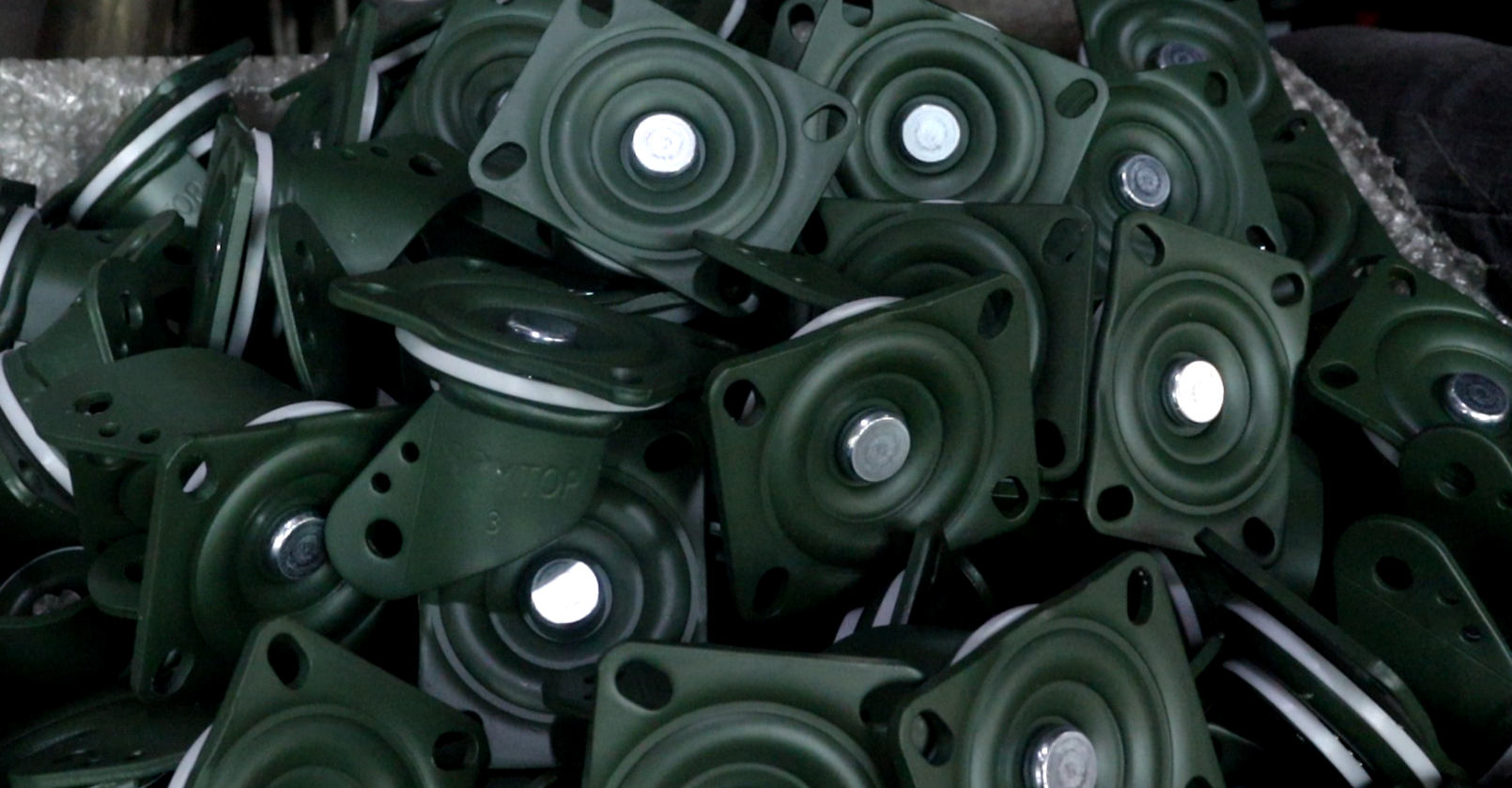In the production and processing of casters, strict adherence to technical requirements is a key factor in ensuring product quality and reducing the rate of defective products. From appearance to assembly, from caster round runout to overload capacity, each link of the technical standard is crucial. In this paper, we will summarize the technical requirements before the production and processing of casters, in order to provide a useful reference for improving product quality.
I. Appearance technical requirements
1. Parts defect control: all parts should be free of defects affecting the use, such as cracks, deformation and so on. The surface of metal parts should take anti-rust measures, such as spraying anti-rust paint or electroplating treatment to prevent rust and corrosion.
2. Color uniformity: the surface of the parts should be uniform in color, without obvious color difference or spots to ensure the overall beauty of the product.
Second, assembly technical requirements
1. Flexibility of rotating parts: casters, brackets and other rotating parts should rotate flexibly, without stagnation and loosening phenomenon, to ensure that the product can move smoothly in the process of use.
2. Firmness of caster assembly: the caster assembly should be firm and reliable, and the axle should not rotate with the caster to prevent it from falling off or being damaged in the process of traveling.
4. Reliability of braking device: For casters with braking device, the braking device should be reliable to ensure that the movement of casters can be stopped quickly and effectively when needed.
5. Bracket steering clearance control: the bracket steering clearance should be between 0.1mm-0.2mm to ensure the flexibility and stability of the steering.
6. Size compliance: the main dimensions of casters should be in line with GBT standards to ensure product versatility and interchangeability.
Third, caster round runout technical requirements
Round runout tolerance of caster is one of the important indexes to measure the quality of caster. The end face runout tolerance should be controlled within 1.0% of wheel diameter D, and the radial runout tolerance should be controlled within 0.5% of wheel diameter D. This will ensure that the casters will be in good condition during rotation. This can ensure that the caster wheel in the rotation process to maintain smooth, reduce vibration and noise.
Four, overload capacity technical requirements
After overload test, the residual deformation of wheel diameter D of the caster should meet the specified standard. This requirement can ensure that the caster can still maintain stable performance when subjected to a certain overload, to avoid damage or failure caused by overload.
V. Static pressure resistance technical requirements
After the test of hydrostatic compression resistance, the caster should maintain good rotational flexibility and axle stability. Specific requirements include: no stagnation and loosening of rotating parts; no rotation of the axle, and no deformation affecting the rotation of the caster. This can ensure that the caster can still maintain stable performance when bearing static pressure.
Sixth, walking performance technical requirements
Under the test conditions, the caster should meet the following requirements after crossing 500 obstacles on the walking test machine: the tire has no cracks, spalling or local excessive wear; there is no abnormal damage and permanent deformation affecting the use of the caster parts; the bearing (axle sleeve) rotates normally without any stagnation or loosening phenomenon. This requirement can simulate the complex road conditions in the actual use scenario to test the durability and reliability of casters.
To summarize, the technical requirements before the production and processing of casters cover a variety of aspects such as appearance, assembly, caster round runout, overload capacity, hydrostatic pressure resistance and walking performance. Only by strictly following these technical requirements for production and processing, can we ensure that the quality and performance of casters meet the standard requirements. At the same time, following the GBT standard can also improve the versatility and interchangeability of casters, bringing better user experience.
Post time: Dec-04-2024



